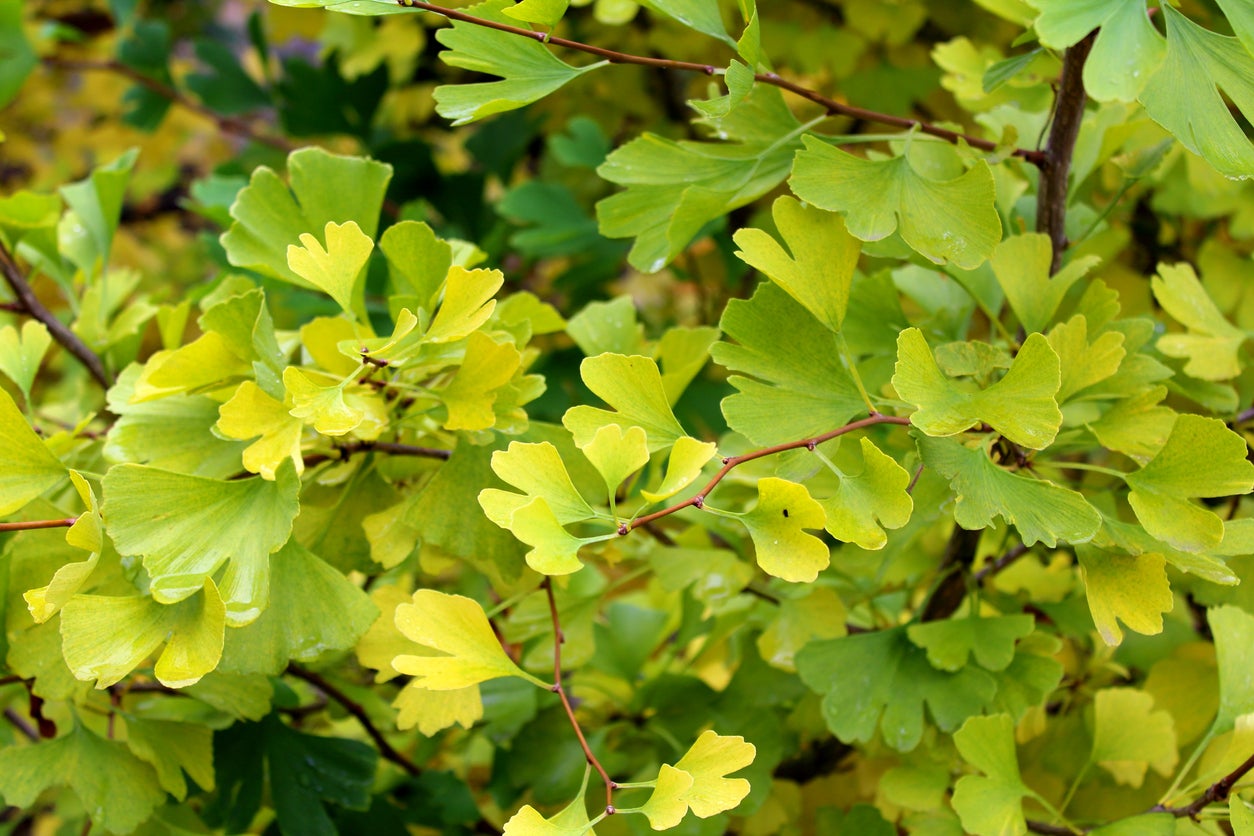Managing Sick Ginkgo Trees: How To Control Diseases Of Ginkgo Trees


The ginkgo or maidenhair tree (Ginkgo biloba) has been on earth for some 180 million years. It was thought to have become extinct, leaving only fossil evidence of its fan-shaped leaves. However, specimens were discovered in China from which it was later propagated.
Given how long the ginkgo trees have survived on the planet, it won’t surprise you to learn that they are generally strong and healthy. Still, ginkgo tree diseases do exist. Read on for information about the diseases of ginkgo with tips for managing sick ginkgo trees.
Issues with Ginkgo
In general, ginkgo trees resist most pests and diseases. Their resistance to ginkgo tree diseases is one reason they have survived as a species for so long.
Ginkgoes are often planted as street trees or garden specimens for their lovely, emerald-green leaves. But the trees also bear fruit. The primary issues with ginkgo identified by homeowners involve this fruit.
Female trees bear generous amounts of fruits in autumn. Unfortunately, many of them fall to the ground and decay there. They smell like rotting meat as they decay, which makes those nearby unhappy.
Diseases of Ginkgo
Like every tree, ginkgo trees are vulnerable to some diseases. The ginkgo tree diseases include root problems like root knot nematodes and phytophthora root rot.
Root Know Nematodes
Root knot nematodes are tiny, soil-dwelling worms that feed on a tree's roots. Their feeding causes the ginkgo roots to form galls that prevent the roots from absorbing water and nutrients.
Sign up for the Gardening Know How newsletter today and receive a free copy of our e-book "How to Grow Delicious Tomatoes".
Treating ginkgo diseases that involve root knot nematodes is difficult. All you can do is to start managing sick ginkgo trees by adding compost or peat to the soil to help the trees process nutrients. If they become badly infected, you’ll have to remove and destroy them.
Your better bet is to prevent root knot nematodes from infecting your ginkgo in the first place. Buy your young tree from a reputable nursery and make sure it is certified to be a nematode-free plant.
Phytophthora Root Rot
Phytophthora root rot is another one of the diseases of ginkgo that occurs occasionally. These soil-borne pathogens can cause a tree to die within a few years if not treated.
Treating these types of gingko tree diseases is possible. You should use fungicides containing the ingredient fosetyl-al. Follow label directions.

Teo Spengler is a master gardener and a docent at the San Francisco Botanical Garden, where she hosts public tours. She has studied horticulture and written about nature, trees, plants, and gardening for more than two decades, following a career as an attorney and legal writer. Her extended family includes some 30 houseplants and hundreds of outdoor plants, including 250 trees, which are her main passion. Spengler currently splits her life between San Francisco and the French Basque Country, though she was raised in Alaska, giving her experience of gardening in a range of climates.